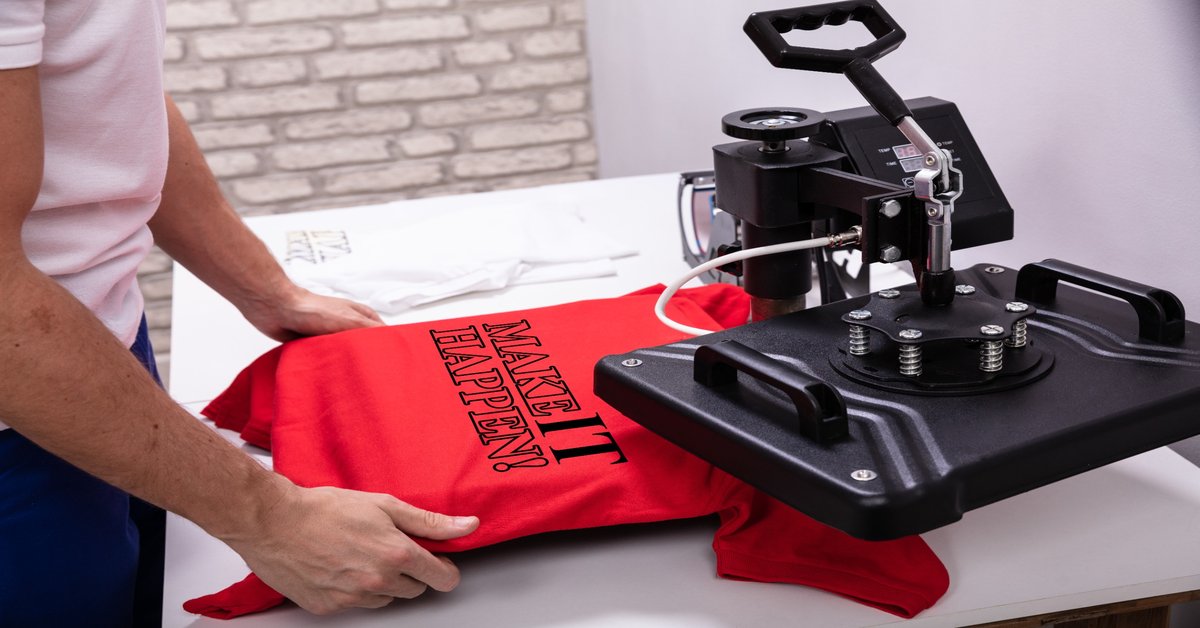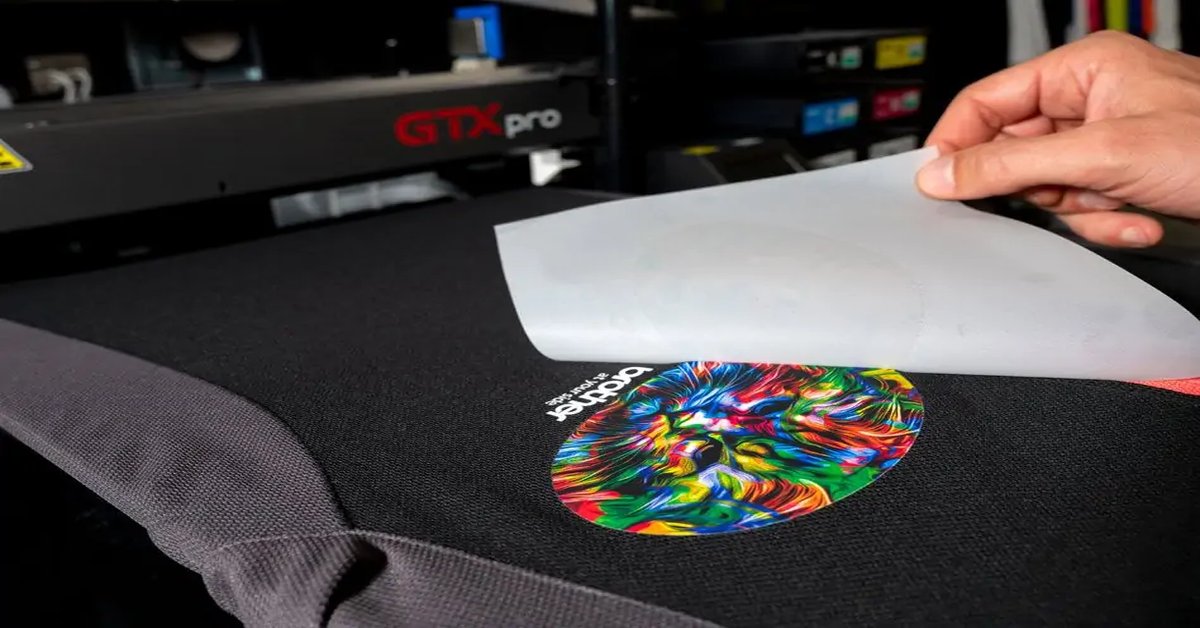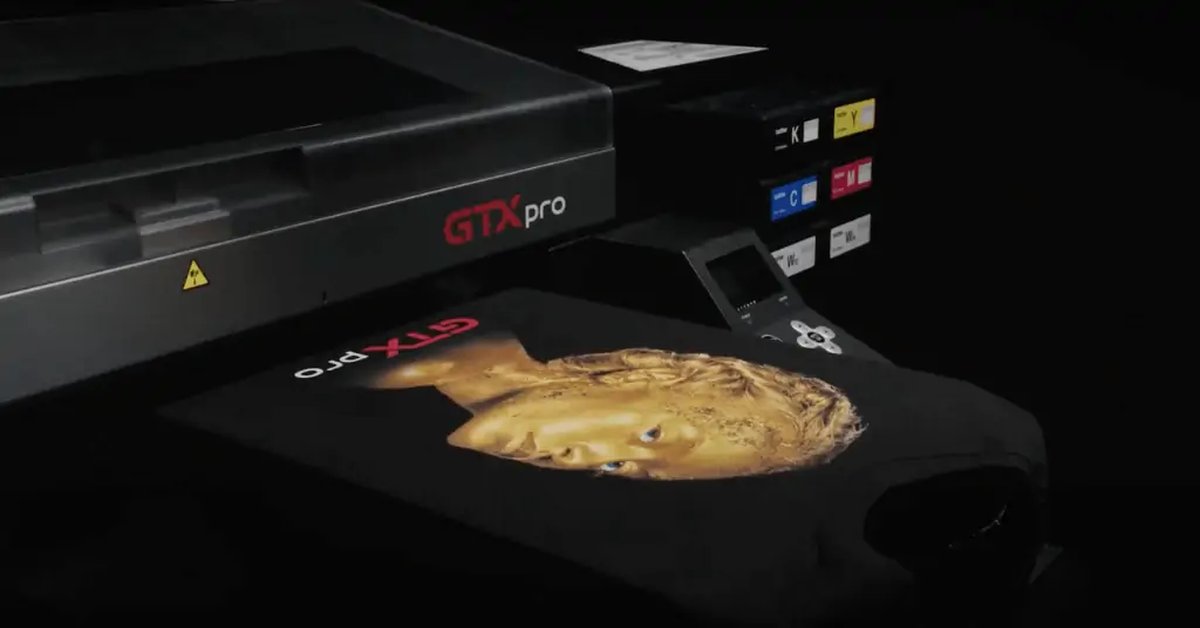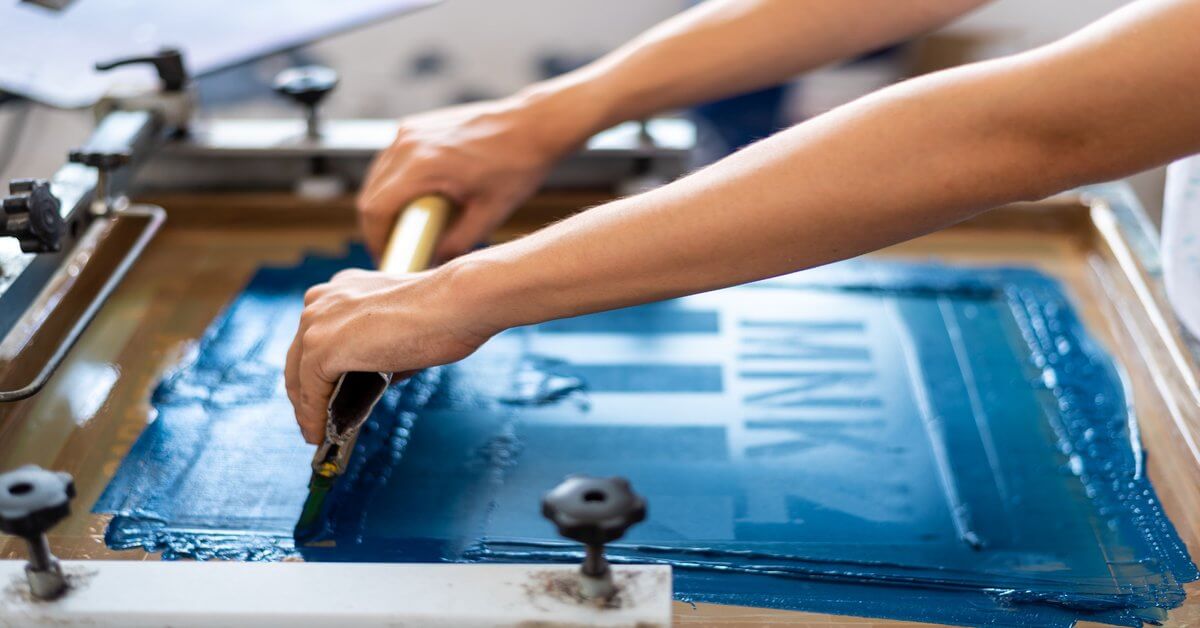Your Cart is Empty
In order to provide you with a competitive quote, Please send us the following and we’ll get back to you as soon as we can:

Heat transfer vinyl (HTV) has revolutionized the world of custom apparel and textile decoration, offering a fast, efficient, and accessible way to create personalized designs on garments and other fabric-based products. Whether you're an entrepreneur starting a custom t-shirt business, a crafting enthusiast looking to create personalized items, or just someone interested in the art of heat transfers, this in-depth guide will cover everything you need to know about working with heat transfer vinyl.
In this comprehensive guide, we’ll explore what heat transfer vinyl is, how the process works, the tools and materials required, step-by-step instructions, best practices, and creative applications for heat transfers. With these insights, you'll be well on your way to mastering HTV and achieving professional-quality results.
Heat transfer vinyl (HTV) is a special type of vinyl used to create custom designs on various fabrics and materials using a heat press or an iron. HTV typically comes in rolls or sheets, and it is available in a wide range of colors, finishes, and effects, including glossy, matte, glitter, holographic, metallic, and more.
The material itself is made up of two layers:
HTV is widely used for customizing t-shirts, hoodies, bags, hats, and other garments, as well as for home décor, promotional products, and even signage. It’s popular due to its ease of use, durability, and ability to produce intricate designs, logos, and text with minimal setup.
There are many different types of heat transfer vinyl, each designed for specific applications, materials, or desired effects. Here’s a breakdown of the most common types:
Standard heat transfer vinyl is the most basic type and is typically available in matte or glossy finishes. It’s perfect for everyday t-shirt designs and works well with cotton, polyester, and cotton-blend fabrics. It’s easy to weed (the process of removing the excess vinyl) and applies with consistent results.
Glitter heat transfer vinyl adds a sparkle to your designs and is great for adding a touch of glamour to garments. It’s thicker than standard HTV, which can make it more challenging to cut and weed, but it creates eye-catching results on everything from t-shirts to tote bags.
Metallic HTV creates a shiny, reflective finish that mimics the look of metal. This vinyl type is perfect for logos, text, and designs that need to stand out with a bold, futuristic appearance.
Holographic vinyl gives your designs a prismatic, multi-dimensional look that changes colors depending on how the light hits it. This type of vinyl is commonly used for fashion garments and other projects where you want a unique, vibrant finish.
Stretch HTV is designed for fabrics with more elasticity, such as athletic wear or performance clothing. This vinyl has greater flexibility and durability, making it ideal for garments that need to withstand repeated movement and stretching without cracking or peeling.
Flocked HTV has a fuzzy, velvet-like texture and adds a three-dimensional feel to designs. This type of vinyl is often used to create retro-style graphics and logos, providing a soft, textured finish.
This vinyl type glows in the dark after being exposed to light. It’s great for fun, novelty designs, and is often used for children's clothing, costumes, or special event apparel.
Patterned HTV comes with pre-printed designs, such as camouflage, animal prints, or florals, allowing you to add more intricate patterns to your creations without needing to layer multiple vinyl colors.
Reflective HTV is typically used for safety gear or athletic apparel, as it reflects light in low-visibility conditions. It’s often used on running or cycling gear to make wearers more visible in dark environments.
Sublimation HTV is a special type of vinyl that works with sublimation printers to transfer full-color images onto fabrics. This process allows for more detailed and colorful designs than traditional vinyl cutting methods.
HTV works by applying heat and pressure to transfer a cut-out design onto fabric or another material. The process involves the following key steps:
A cutting machine, such as a Cricut or Silhouette, is used to cut out the design from a sheet or roll of HTV. The design is cut in reverse (mirror image), as the vinyl will be flipped over during the transfer process.
Once the design is cut, the excess vinyl is removed, leaving only the parts that will be transferred onto the fabric. This process is called weeding and typically involves using a weeding tool to carefully peel away unwanted vinyl.
After the design is weeded, it is placed onto the fabric with the carrier sheet facing up. A heat press or household iron is then used to apply heat and pressure, which causes the adhesive backing on the vinyl to bond with the fabric fibers.
Once the vinyl has adhered to the fabric, the carrier sheet is peeled away, leaving behind the finished design. Some types of HTV require a cold peel (waiting for the vinyl to cool before peeling), while others allow for a hot peel (peeling immediately after pressing).
Heat transfer vinyl is a relatively modern technology, but the concept of heat transfers in textile decoration dates back several decades. The origins of heat transfers can be traced to the mid-20th century when heat transfer processes were first used to apply designs onto fabrics using various techniques like screen printing.
With the advent of digital cutting machines and new materials, HTV emerged as an accessible and versatile solution for small-scale printing. The widespread availability of cutting machines like Cricut and Silhouette in the early 2000s allowed hobbyists and businesses alike to create intricate, custom designs on-demand.
Since then, the technology behind HTV has continued to evolve, with manufacturers offering a growing variety of colors, finishes, and effects. Advances in heat press machines, cutting technology, and vinyl formulations have made HTV one of the most popular methods for custom apparel and textile decoration.
When deciding on the best method for decorating garments or textiles, it’s important to compare HTV to other popular methods such as screen printing, direct-to-garment (DTG) printing, and sublimation. Here’s how HTV stacks up:
Like any printing method, HTV has its strengths and limitations. Here’s a look at the pros and cons:
Here’s a detailed guide to applying heat transfer vinyl to your garments:
Start by designing your artwork in graphic design software like Adobe Illustrator, CorelDRAW, or the software that accompanies your cutting machine (such as Cricut Design Space or Silhouette Studio). Make sure to size your design according to the garment or item you’re decorating.
When working with HTV, always remember to mirror your design. This is because the vinyl will be flipped over when applied to the fabric, and the design needs to be in reverse so that it reads correctly once transferred.
Load your HTV into the cutting machine with the carrier sheet facing down. The vinyl side should face the blade. Set your cutting machine to the correct settings based on the type of vinyl you’re using and the thickness of the material. Run a test cut if necessary to ensure the machine is cutting properly.
After the design is cut, use a weeding tool to remove the excess vinyl, leaving only the parts of the design that you want to transfer onto the fabric. Be careful with intricate designs, as small details can be easy to miss during weeding.
Before applying the vinyl, preheat your garment using a heat press or iron. This removes any wrinkles or moisture from the fabric, ensuring a smooth surface for the vinyl to adhere to.
Position the cut design on your garment with the carrier sheet facing up. Use a heat press or iron to apply heat and pressure according to the vinyl manufacturer’s instructions. Most HTV requires a temperature of 300-320°F (150-160°C) and firm pressure for 10-15 seconds.
After pressing, check the instructions for whether the vinyl is a hot peel or cold peel. For hot peel vinyl, remove the carrier sheet immediately. For cold peel vinyl, wait for the design to cool before peeling.
For added durability, you can cover the design with a silicone or parchment sheet and press again for 5-10 seconds. This will help ensure the vinyl is fully adhered and smooth.
With so many types of HTV available, it’s essential to choose the right vinyl for your project based on the fabric, the effect you want, and the durability you need. Here’s a quick guide to choosing the right vinyl:
Here are the essential tools and equipment needed for working with HTV:
Heat transfer vinyl is easy to work with, but there are common mistakes that can impact your results. Here’s how to avoid them:
One of the most common mistakes is forgetting to mirror the design before cutting. Always double-check that your design is reversed before loading it into the cutting machine.
Different types of HTV have different thicknesses, so it’s important to adjust the cutting settings accordingly. Perform a test cut to ensure your machine is cutting through the vinyl without cutting into the carrier sheet.
Using the wrong temperature or pressing time can cause the vinyl to either not adhere properly or melt. Always follow the manufacturer’s recommended heat and time settings based on the type of vinyl and fabric you’re using.
Take the time to measure and align your design on the garment before pressing. Use a ruler or measuring tape to ensure the design is centered and level.
Some types of HTV require a cold peel, meaning you need to wait for the vinyl to cool before removing the carrier sheet. Peeling too soon can cause the vinyl to lift off or warp.
HTV offers a wide range of creative possibilities beyond basic transfers. Here are some popular techniques and effects you can try:
You can create multi-colored designs by layering different sheets of vinyl. Cut each layer separately, then apply them one at a time, making sure to align them correctly.
Combine different textures like matte, glitter, and metallic vinyl to add depth and interest to your designs. For example, use glitter HTV for part of a design and matte HTV for the rest.
Create a shadow or offset effect by cutting the same design in two different colors and layering them slightly offset from each other. This technique adds dimension to your designs.
In a knockout design, parts of one layer of vinyl are removed to reveal the color of the layer beneath. This technique allows you to create intricate designs without overlapping layers.
Patterned HTV allows you to add intricate designs, such as camouflage or animal prints, without needing to layer multiple colors of vinyl. Simply cut your design from the patterned vinyl and transfer it as usual.
Heat transfer vinyl can be used for much more than just t-shirts. Here are some creative applications for HTV:
Starting a heat transfer vinyl business is a great way to turn your passion for crafting into a profitable venture. Here’s how to get started:
Decide on your niche and target market. Will you focus on custom t-shirts, promotional products, or personalized gifts? Outline your pricing strategy, production costs, and marketing plan.
Purchase the necessary equipment, including a cutting machine, heat press, weeding tools, and a range of vinyl materials. Consider starting with a few different types of vinyl to offer customers a variety of options.
Create sample designs and take high-quality photos of your products to showcase your work. These will be essential for marketing your business and attracting customers.
Create a website or use an e-commerce platform like Etsy or Shopify to sell your products. Include detailed product descriptions and offer customization options to appeal to a broader audience.
Use social media platforms like Instagram, Facebook, and Pinterest to showcase your work and engage with potential customers. You can also attend craft fairs, markets, or pop-up shops to promote your business locally.
When choosing a printing method for your business, it’s important to consider the costs involved. Here’s a cost analysis of HTV compared to screen printing and direct-to-film (DTF) printing:
As technology continues to evolve, the future of heat transfers looks bright. Here are some trends to watch:
Heat transfer vinyl is one of the most versatile and accessible methods for creating custom apparel and personalized items. With a wide variety of vinyl types, colors, and effects, HTV offers endless creative possibilities for beginners and professionals alike. Whether you’re starting a custom apparel business or working on DIY projects, HTV provides an affordable, easy-to-use solution for high-quality, long-lasting designs.
By following the steps and best practices outlined in this guide, you can master the art of heat transfers and produce professional results every time. Whether you're layering glitter and metallic vinyl for a unique t-shirt design or creating custom home décor items, HTV is a powerful tool in your creative arsenal.


